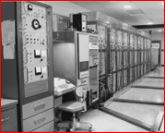Laser Peening: A Battelle Labs Invention, Part 1
The path to laser shock peening begins at Battelle Memorial Institute in Columbus, Ohio.
Posted: January 15, 2016
By:
What if laser shock peening had not been discovered, or its discovery delayed for a decade or two into the 1980s and 1990s? The generation of an original idea and the demonstration of its technological potential is often the result of circumstances and personal interactions that just happen to mesh at the right time, in the right place, and in the right sequence. This is certainly true for the discovery of laser shock peening.

To explore this possibility, he needed to talk to a metallurgist, ideally one who would be open and receptive to spending some time to design and perform a useful trial experiment. He was fortunate to be led to Ben Wilcox in the Metal Science Group. His first questions to Wilcox were, “Is there any change that laser shock waves could improve metal properties?, and if so, what simple experiment can we run to demonstrate this?” Wilcox, with the help of Dena Williams and William Gallagher, decided the most meaningful single experiment would be to determine whether laser shocks were sufficient to strengthen metals.
The experiment was to fabricate several simple dog bone-shaped tensile specimens of 7075 aluminum alloy, an important aircraft structural alloy. Three heat treatment conditions were investigated: solution treated and quenched, solution treated and aged to the T73 condition, and solution treated and peak aged to the T6 condition. After machining, each of these conditions were tested in the non-laser peened and the laser peened condition. The gage length of the tensile specimens was small, 10 mm long by 5 mm wide, and was covered by a single laser spot. The surface was bare except for a 1 mm-thick glass overlay. The laser pulse temporal shape was Gaussian, the steep rise time came into play much later when higher power densities were applied. In this first experiment, the power densities were low, nominally 1.3 x 109 watts/cm². The specimens were backed up by a brass plate and peened first on one side and then the other.
The tensile test results were very encouraging. Continue to Part 2 to see the amazing results.
Interested in Seeing More?
Tell us about your application, material, or failure mechanism and we will have one of our experts reach out to you. Our extensive library of research and years of experience gives us a unique advantage to apply a finite element analysis to help diagnose the best application for your situation.
